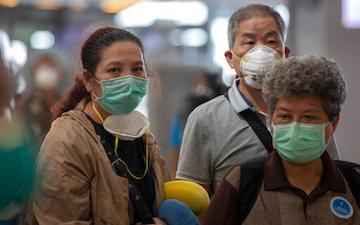
AP Images
Anita Varma is the assistant director of Journalism and Media Ethics, as well as Social Sector Ethics. Views are her own.
The coronavirus outbreak has prompted a relentless stream of coverage across the world. Some of the coverage is aimed at helping people protect themselves from contagion, while other stories have been criticized for sensationalism, racism against Chinese people, and amplifying conspiracy theories. Covering coronavirus is crucial from a public service perspective, and representing affected communities ethically needs to remain a chief concern.
Below are five suggestions for covering the coronavirus, starting with questions reporters and storytellers should ask themselves when writing:
1. Is this particular story newsworthy? Why?
Coronavirus writ large is newsworthy due to its clear impact and ongoing threat to public health. Particular stories related to coronavirus, however, may not be inherently newsworthy. For example, coverage of popular speculation about the origins of the virus may muddy the waters by making it harder for readers to grasp what is and is not known about the outbreak.
2. Does this representation uphold victims of coronavirus’ dignity?
Hundreds of people have died of coronavirus, and while precise numbers are under dispute, there is consensus that coronavirus has been fatal. People whose lives have been lost to the virus are still people who have surviving families and friends, and using their deaths as fodder for doomsday narratives does not help inform or explain the outbreak in a meaningful way.
3. How is China, the country where the coronavirus outbreak began, represented?
“Yellow peril” and orientalism are longstanding issues in Western media representations of China. These stereotypes often operate at the level of unconscious bias, but can be consciously addressed by editing stories that rely on such stereotypes, and replacing them with grounded research on China (including interviews with people living in China) instead.
4. Who is quoted? Who is not quoted?
Coverage of global outbreaks typically rely on official sources, such as statements from government actors, global health organizations, and scientists. Indexing official claims is intuitive and may be efficient, but also sets journalists up to amplify official claims uncritically. In addition to collecting official comments, journalists should also seek out perspectives of people who may challenge the established narrative – particularly from people directly affected.
5. What frames does the story use? Are these the best frames for communicating the news value of the story?
In past global outbreaks, media representations have focused on fear, attribution of responsibility, human interest, and action-prevention. Arguably, all of these frames are relevant for covering the coronavirus – but also may devolve into fear-mongering (rather than consciousness-raising), playing a blame game, treating victims of coronavirus as objects of intrigue, or promoting overzealous calls for isolation.
Framing stories constructively, with an emphasis on what has happened and what people can do going forward – both to protect themselves and to support affected communities – offers a better way forward.
